
Mid Ohio Sports Car Course
Historic road racing facility located in central Ohio.

Historic road racing facility located in central Ohio.

Courtesy Phoenix Raceway:
Construction on Phoenix Raceway is completed in January 1964. Scottsdale builder Richard Hogue, an amateur sports car racer, designs the track at the foothills of the Estrella Mountains to be known as the “Indianapolis of the West” as it is the only one of its kind outside of Daytona Beach and the only road racing course between the Mississippi and California. The new track includes a uniquely-shaped one-mile oval, a quarter-mile drag strip and a meandering 2.5-mile road course.
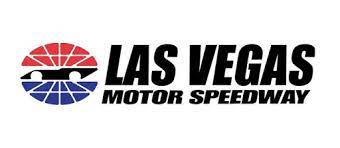
Since its opening in 1996, Las Vegas Motor Speedway has played host to some of the most exciting racing under the bright lights of Las Vegas.

The 20-turn, counterclockwise circuit takes advantage of the naturally undulating landscape, including an intimidating 133-foot hill at Turn 1 that must be seen in person to be believed. It is home to the only Formula 1 and MotoGP races in the country — the UNITED STATES GRAND PRIX and Red Bull Grand Prix of The Americas — and has played host to ESPN’s X Games, the FIA World Endurance Championship, IMSA WeatherTech SportsCar Championship, Pirelli World Challenge and more. Nestled within the track is Germania Insurance Amphitheater, the largest permanent outdoor amphitheater in Central Texas, and its 251-foot signature observation tower. This unique treasure in the Live Music Capital of the World has hosted some of the biggest names in music and entertainment, including Texas icon Willie Nelson, Jimmy Buffett, KISS, Nine Inch Nails, Kanye West, Kenny Chesney, Drake, Maroon 5, Muse, Kelly Clarkson and dozens more.


Courtesy misspeedway.com website:
“The track is nestled on more than 1,400-plus acres in the Irish Hills of southeastern Michigan. Groundbreaking took place on September 28, 1967. Over 2.5 million yards of dirt were moved to form the D-shaped oval designed by Charles Moneypenny, who previously designed the 2.5-mile Daytona International Speedway. The original layout included infield and exterior roads, which could be combined to form a single 3.1-mile interior/exterior road course, or divided into separate 1.9-mile interior/exterior road courses. The road courses were designed by Formula One great Stirling Moss and are still used on a limited basis for passenger car testing by area law enforcement agencies. The last interior road course race was held in 1984, and the last time the exterior road course was used was in 1973.”

Racing came to a halt in the early 1940s due to the war, and returned late in the decade with hot rod racing. Soon after, midget and stock car racing became common.
In 1954, weekly racing began at the Knoxville Raceway. By this time, lighting was added to the track, along with new fencing. Stock car racing was the primary attraction, which were passenger cars stripped of glass, innards and extra metal. Roll cages were often constructed inside the car as a safety precaution.
Events at the Knoxville Raceway were promoted by the Southern Iowa Stock Car Racing Association until 1956, when Marion Robinson took over as promoter. During Robinson’s tenure, “modifieds”, (a stock car with modifications made to the engine), and “supermodifieds” (modifieds with the car bodies cut away to eliminate weight), were the rage. Eventually, tubing replaced the car frames, giving way to the sprint car as we know it today. Under Robinson’s leadership, the Knoxville Nationals were born.
P. Ray Grimes came into leadership at the Knoxville Raceway in 1974, promoting races until 1977. Grimes’ legacy includes extending the length of the Knoxville Nationals to four days.
1977 brought about a new Race Director, Ralph Capitani. Capitani continued to build on the growth of his predecessors, increasing the payoff for the 4-day Knoxville Nationals event to $100,000. The first tape-delayed broadcast of the Nationals was in 1987, with the first live broadcast in 1993.

The following courtesy of Wikipedia:
“World Wide Technology Raceway is a motorsport racing facility in Madison, Illinois, just east of St. Louis, Missouri, United States, close to the Gateway Arch.”


Courtesy of theglen.com:
“Road racing came to Watkins Glen in 1948 by way of Cameron Argetsinger, a law student at Cornell University who often stayed at his father’s summer home on Seneca Lake, with the family having ties to the area since the early 1800’s. Argetsinger, an early member of the SCCA, proposed an amateur road race to be called the “Watkins Glen Grand Prix” to the Watkins Glen Chamber of Commerce. Amid an enthusiastic response to the idea, Argetsinger mapped out a 6.6-mile course using mostly paved roads with a short dirt and gravel stretch, and the SCCA sanction was obtained.
On October 2nd, 1948, 15 cars started the 8-lap, 52.8-mile Grand Prix, with Wayne, Pennsylvania’s Frank Griswold winning in a pre-war Alfa Romeo 8C2900 coupe, closely followed by Briggs Cunningham in his famous Bu-Merc. Other prominent entrants included William “Bill” Milliken, who rolled his Bugatti 35 in qualifying, giving “Milliken’s Corner” its name. Charles Addams, the cartoonist who created the Addams family, was also entered, along with Miles and Sam Collier, major figures in the history of American road racing.”

Laguna Seca is known for the iconic Corkscrew. From entering the Corkscrew corner to exiting it, riders and drivers drop the equivalent of five and a half stories in just 142 yards, with a further ten story drop between the Corkscrew exit and the following Rainey Curve.
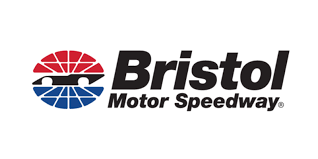
The Bullring.
Bristol Motor Speedway once held a NCAA College Football game in the track infield between Virginia Tech and Tennessee. Record breaking attendance of 156,990 eclipsed the previous record of 115,109 held for years by Michigan.

Courtesy of DaytonaInternationalSpeedway.com
“The history of Daytona International Speedway began in 1953 when Bill France Sr. realized the days of racing on the beach were numbered due to spreading land usage of a rapidly growing population and huge race crowds. France put his plans for the future of racing in Daytona Beach, Florida in motion on April 4, 1953 with a proposal to construct a permanent speedway facility. On August 16, 1954, France signed a contract with City of Daytona Beach and Volusia County officials to build what would become Daytona International Speedway, the “World Center of Racing.” In 1957, land clearing began for the Speedway. The famous 31-degree highbanks were included in the design of the track so higher speeds could be achieved and to make it easier for fans to see the cars race around the 2.5-mile tri-oval. The dirt for the banking was taken from the infield and resulted in a 29-acre space that is known as Lake Lloyd.
Racing moved from the beach-road course to Daytona International Speedway in 1959 and the first DAYTONA 500 took place on February 22 in front of a crowd of over 41,000. Car entries included both hard tops and convertibles (it was the only DAYTONA 500 that included convertibles). The finish of the inaugural DAYTONA 500 was too close to call. Johnny Beauchamp went to Victory Lane, but 61 hours later Lee Petty was declared the official winner after a clip of newsreel footage showed that Petty nipped Beauchamp at the line by approximately two feet.
In 1961, the DAYTONA 200 motorcycle race was moved from the beach to the Speedway. The following year, DIS hosted the inaugural running of what is now known as the Rolex 24 At DAYTONA, North America’s most prestigious sports car race. The race was initially a three-hour race and became the 24-hour race we know it as today in 1966.
On July 5, 2013, ground broke on the $400 million DAYTONA Rising frontstretch renovation project that would transform the historic speedway into a state-of-the-art motorsports facility. The Speedway now has approximately 101,500 permanent, wider and more comfortable seats, 40 escalators, 17 elevators, twice as many restrooms, three times as many concession stands and three concourse levels that span the nearly mile-long frontstretch. In addition, the Speedway features over 60 luxury suites with trackside views and a completely revamped hospitality experience for corporate guests. The projected was completed in January 2016 and was awarded the SportsBusiness Journal’s prestigious Sports Business Award for Sports Facility of the Year.
The approximately 500-acre motorsports complex boasts the most diverse schedule of racing on the globe. In addition to at least nine major event weekends, the Speedway grounds are also used extensively for events that include concerts, civic and social gatherings, car shows, photo shoots, production vehicle testing and police motorcycle training. In addition, Daytona International Speedway showcases daily track tours and is home to the champion DAYTONA 500 car and the Motorsports Hall of Fame of America.”
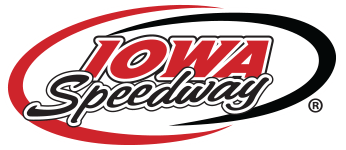
Iowa Speedway is know as The Fastest Short Track on the Planet!

Following is courtesy of Wikipedia
“The Indianapolis Motor Speedway is an automobile racing circuit located in Speedway, Indiana (an enclave suburb of Indianapolis) in the United States. It is the home of the Indianapolis 500 and the Verizon 200,[4] and formerly the home of the United States Grand Prix. It is located on the corner of 16th Street and Georgetown Road, approximately six miles (9.7 km) west of Downtown Indianapolis.
Constructed in 1909, it is the second purpose-built, banked oval racing circuit after Brooklands and the first to be called a ‘speedway’. It is the third-oldest permanent automobile race track in the world, behind Brooklands and the Milwaukee Mile. With a permanent seating capacity of 257,325,[1] it is the highest-capacity sports venue in the world.[5]
Considered relatively flat by American standards, the track is a 2.5-mile-long (4.0 km) rectangular oval with dimensions that have remained essentially unchanged since its construction. It has two 5⁄8-mile-long (1,000 m) straightaways, four geometrically identical 1⁄4-mile (400 m) turns, connected by two 1⁄8-mile (200 m) short straightaways, termed “short chutes”, between turns 1 and 2, and between turns 3 and 4.
A modern, FIA Grade One infield road course was completed in 2000, incorporating part of the oval, including the main stretch and the southeast turn, measuring 2.605 mi (4.192 km). In 2008, and again in 2014, the road course layout was modified to accommodate motorcycle racing, as well as to improve competition. Altogether, the current grounds have expanded from an original 320 acres (1.3 km2) on which the speedway was first built to cover an area of over 559 acres (2.3 km2). Placed on the National Register of Historic Places in 1975 and designated a National Historic Landmark in 1987, it is the only such site to be affiliated with automotive racing history.
In addition to the Indianapolis 500, the speedway also hosts NASCAR‘s Verizon 200 and Pennzoil 150. From 2000 to 2007, the speedway hosted the Formula One United States Grand Prix, and from 2008 to 2015 the Moto GP.
On the grounds of the speedway is the Indianapolis Motor Speedway Museum, which opened in 1956, and houses the Hall of Fame. The museum moved into its current building located in the infield in 1976. Also on the grounds is the Brickyard Crossing Golf Resort, which originally opened as the Speedway Golf Course in 1929. The golf course has 14 holes outside the track, along the backstretch, and four holes in the infield. The site is among the most visited attractions in Indianapolis, with 1 million guests annually.[6] The speedway has served as the venue for the opening ceremonies for the 1987 Pan American Games. The track is nicknamed “The Brickyard” (see below), and the garage area is known as Gasoline Alley.
On November 4, 2019, Hulman & Company announced the sale of its company, including the Indianapolis Motor Speedway, the IndyCar Series and associated enterprises to Penske Corporation, owned by Roger Penske.[7]
“

In the early 1950’s, sports car races were being run on the streets in and around Elkhart Lake, Wisconsin. When the state legislature banned racing on public roads, a man named Clif Tufte organized a group of influential local citizens and leaders of the Chicago Region of the Sports Car Club of America (SCCA). This group developed plans and sold stock to build a permanent racecourse. The overall vision of Road America grew out of the dreams of Tufte, a highway engineer, who chose 525 acres of Wisconsin farmland outside the Village of Elkhart Lake for the track.
Tufte’s dream became a reality in April 1955. The natural topography of the glacial Kettle Moraine area was utilized for the track, sweeping around rolling hills and plunging through ravines. By September 10, 1955, the track’s first SCCA national race weekend was held. At 4.048 miles in length, with 14 turns, the track is virtually the same today as it was when it was first laid out and is revered the world over as one of the world’s finest and most challenging road courses. Road America was even recently was named the 2021 Best NASCAR Track in America as voted on by USA Today readers.
The 640-acre, park-like grounds offer amazing viewing opportunities, fantastic concessions and high-speed excitement to thousands of spectators each year. In addition to being a major attraction during public race weekends, Road America offers group event programs, the Briggs & Stratton Motorplex for karting and Supermoto club racing, and the Road America Motorcycle and Advanced Driving Schools.
Millions of dollars in improvements have been made throughout the years, but the original 4.048-mile, 14-turn configuration has never been altered. In 2005, Elkhart Lake’s Road America, Inc. celebrated its 50th anniversary. Its history was documented in a book, “Road America: Celebrating 50 Years of Road Racing” by Tom Schultz. Celebrities such as David Letterman, Tom Cruise, Patrick Dempsey, Tim Allen, Ashley Judd, and the late Paul Newman have visited this venue, not only for the great racing but also for the scenic surroundings of this resort community.
Road America is big business, attracting over 800,000 visitors a year from every corner of the world. Economic impact studies show that Road America, its events and visitors generate more than $100 million dollars annually each year. Over 500 events are held annually at Road America, often running multiple activities on the same day incorporating the four-mile track, the interior Briggs & Stratton Motorplex and the beautiful grounds surrounding the facility.
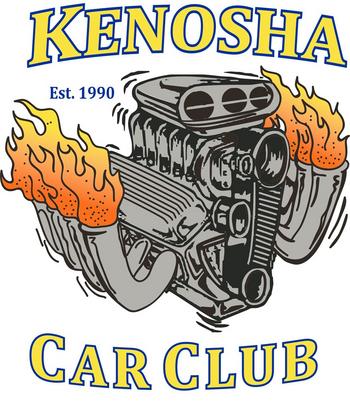
GREAT people who love GREAT cars!!!. That is what the Kenosha Car Club is all about. We have been around since 1990 and are looking forward to many more years to come. If you are looking for a fun car club to join….look no further.
Welcome to the Kenosha Car Club, the oldest, active car club in Kenosha, Wisconsin chartered in 1990. We are a family-oriented, not-for-profit organization founded by and for all individuals who are interested in the maintenance, restoration, and preservation of all types of motor vehicles, makes, and years. We enjoy sharing stories about the vehicles we now have, those vehicles we used to have, and those we wish we had again or hope to add to our collection. The Kenosha Car Club holds its annual car show on the Sunday after Father’s Day in June every year with the proceeds from the show benefiting a local charity organization. Our meetings are held at the Jantz Club at 2604 Washington Road in Kenosha, Wisconsin (262) 657-0856.
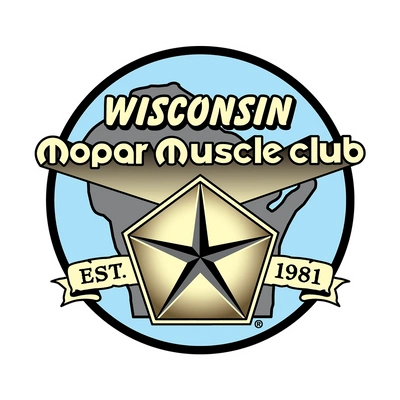
Established in 1981, Wisconsin Mopar Muscle Club (WMMC) is dedicated to the preservation and restoration of all Chrysler produced vehicles. Our members’ vehicles range from the 1930s to the latest Modern Muscle.
WMMC hosts and promotes car shows, swap meets and social events throughout the year. Check out our Events page for details on all our upcoming events, and photos of past events and the great cars at our shows.
Our members are always working on restoration and upgrades for their cars, and we enjoy learning about the latest news. Check out our projects page for a few examples of recent member projects.


Since 2013, Wisconsin Car Enthusiast Club has done more than refine car community: We’ve created one. Guided by a statewide vision, we fuse unique automotive cultures from around the Midwest to create an entirely new way to be a part of the automotive community.
Wisconsin Car Enthusiast Club hosts fresh, comprehensive events throughout Wisconsin. Planning new and immersive ways to engage an automotive enthusiast, our goal is to always grow the community We want to give our members fun, engaging, and immersive ways to express their facet of the car community. Most of all, we want to expand people’s palates and prove that car enthusiasts don’t always come in the form of a muscle or tuner owner.